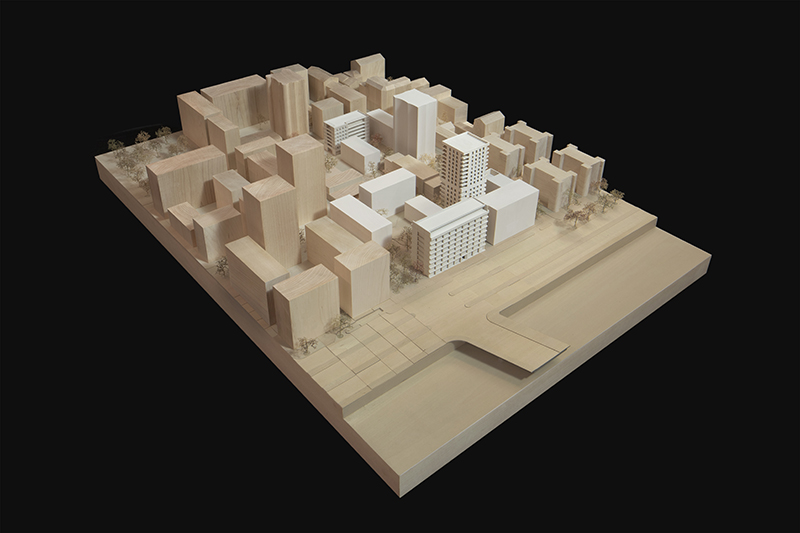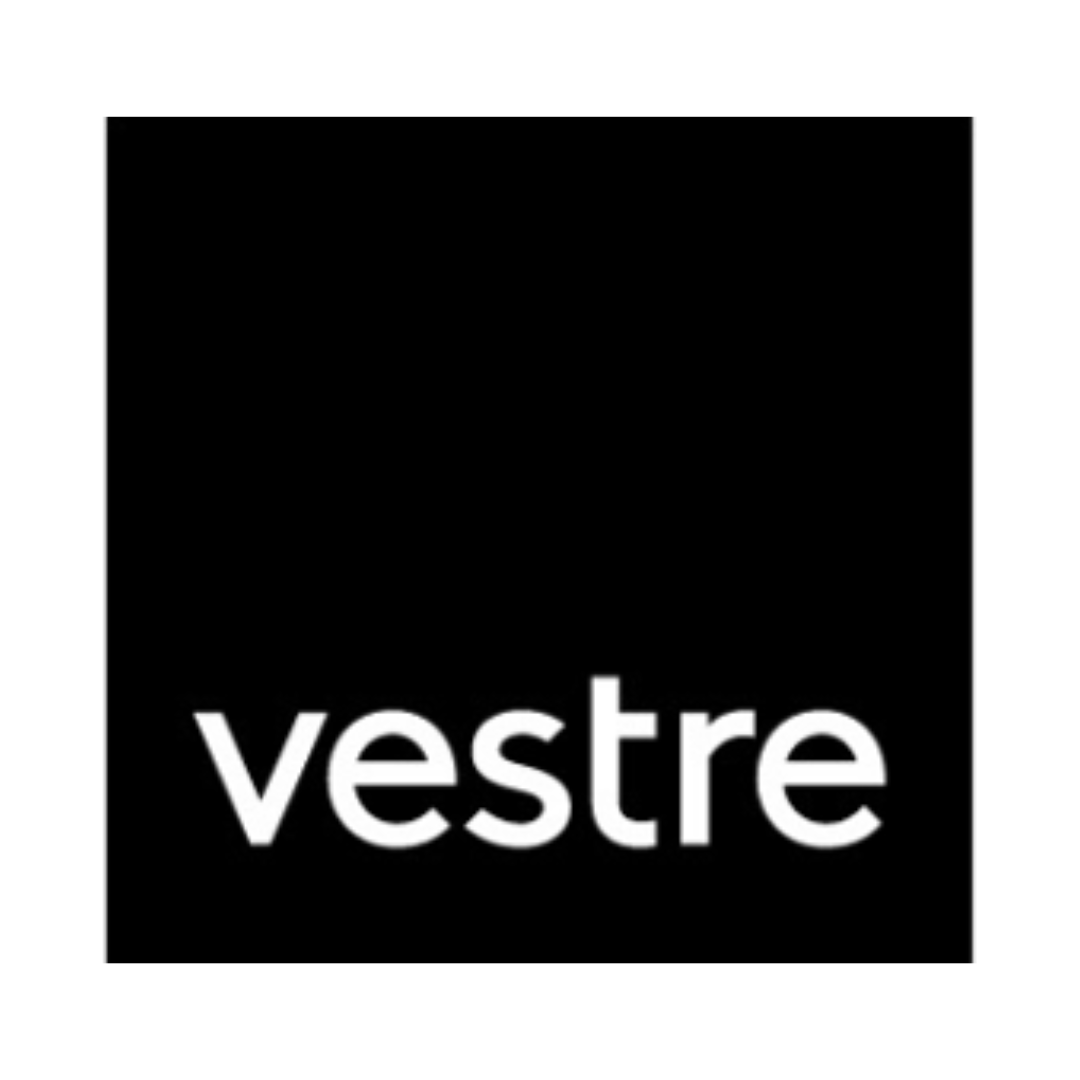Project showcase
Lyon Confluence, Lyon - Bouygues Immobilier, Linkcity with David Chipperfield Architects

This mixed-use quarter contains a range of housing tenures, offices and a health centre, and within each block, the buildings are grouped to define garden courtyards. Transparent and permeable ground-floors give access to the gardens from the street and help to animate the surrounding public spaces
Project location: Lyon
Client/developer: Bouygues Immobilier, Linkcity
Describe the context of this project.
The centre of Lyon is located on a peninsula created by the Rhône and Saône rivers as they converge. The southern tip – La Confluence – has historically been at the periphery of the city due to its marshy conditions and was only developed ad-hoc in the twentieth century with primarily industrial uses. Over the last ten years the area has begun to be redeveloped following a series of masterplans. David Chipperfield Architects was appointed to coordinate three blocks with eleven buildings within a masterplan by Herzog & de Meuron for the second phase of the city centre’s extension into La Confluence on the site of a former wholesale market. The Herzog & de Meuron masterplan constituted a network of streets echoing the linear structure of the old market and the existing street grid to the north with a new park located towards the south.
David Chipperfield Architects’ role entailed adapting the wider masterplan to the specific site and proposed programme as well as developing strategies for the landscape and the general massing, organisation and façade design of the buildings. The process involved working closely with other architects Atelier VERA & Associés Architectes and Aires Mateus Arquitectos with landscape architect Peter Wirtz, as well as mediating between and coordinating with the city, clients and sustainability consultants. Regular collaborative workshops were held to test and develop the proposals.
Please describe your approach to this future place and its mix of uses. How will it function as a vibrant place? How does it knit into and serve the wider area?
Despite the relatively small size of the site there was a desire to create a place with a wide range of uses, something that is unusual at this scale in contemporary masterplans, where a zoning approach is typically preferred. The area will contain a range of housing tenures, offices, retail, a medical centre (Maison de santé) and various public facilities as well as the first mixed-use tower in France. The buildings are architecturally coherent in material quality but individual in scale and character. They are grouped within each block to define garden courtyards. Transparent and permeable ground-floors act as interface between the city, buildings and gardens. Entrance halls connect the streets and gardens and, together with the strategic positioning of communal spaces and shops, help animate the public realm. The quarter contains social housing and accommodation for private sale ensuring a diversity of population. Several buildings are designed for flexibility including an office building which can be easily converted into residential.
The three urban blocks are located at the northern end of the Herzog & de Meuron masterplan and form a continuation of the existing city grid, integrating the development into the city. Two towers, one by David Chipperfield Architects and the second by Aires Mateus create an entrance gesture for the new quarter. These two towers sit either side of the former entrance gate to the wholesale market, which is maintained and transformed, its industrial character creating a sense of continuity and giving a strong identity to the district.
How will the carbon use/material impact of the development of this new place be mitigated? What is the sustainability strategy?
The ambition is to create a mixed-use quarter with a focus on social and environmental sustainability. Communal functions are located on the ground floor including large, accessible bicycle storage areas with showers and changing rooms, as well as a bicycle repair shop to encourage green mobility. The office buildings contain multifunctional spaces of varying size and offer open-air co-working in the garden. Residents can take advantage of several communal functions including rentable guest rooms, events spaces and allotments for the growing of fruit and vegetables encouraging interaction and shared activities within the community. To enhance biodiversity, all gardens and are planted with a large variety of local plant species and composting is used throughout. All buildings are equipped with nesting boxes and have solar panels on their roofs.
Local materials are favoured throughout, with timber used in three buildings: CLT superstructure and slabs as well as a timber façade covering one of the office buildings. The offices are designed to achieve BREEAM, Well and HQE certifications with a high degree of insulation and night-time cooling functions, reducing the operational energy consumption.
The buildings are designed with flexibility and potential future uses in mind to ensure their longevity; one office building is specifically designed to be converted into residences as demand requires. Future residents are involved in the design process with participatory workshops for one of the residential buildings and gardens.
What do you see as the greatest contribution of this project to the citizens of this future place and its surrounding area?
The aim was to coordinate a complex of buildings that work well together to create a physical environment conducive to both public interaction and personal comfort, with quality of life at its core. This is achieved through the scale, purpose and placement of the buildings and the use of landscaping, as well as the careful organisation of the ground floors. These things provide a nurturing framework for the social infrastructure and contributes to creating a sense of neighbourliness and community, simultaneously offering rooms and activities for socialising as well as more secluded spaces for private reflection. The transparent organisation of the ground level provides residents with a safe and accessible environment, ensuring a feeling of security and connectedness.
As well as creating a sense of community within the immediate neighbourhood, the new district also interacts with the wider city ensuring a continuation of the urbanity of central Lyon. The mix of uses, including social housing and public facilities will ensure a vibrant neighbourhood with flexibility built in to all the individual buildings so that they can adapt to future changes and evolve with the city.
Festival of Pineapples
24-26 February 2026
Pineapples prize giving night
April
Pineapples at Festival of Place
10 June 2026
© The Pineapples - Tweak Ltd. 124 City Road, London, EC1V 2NX. Tel: 020 3326 7238




